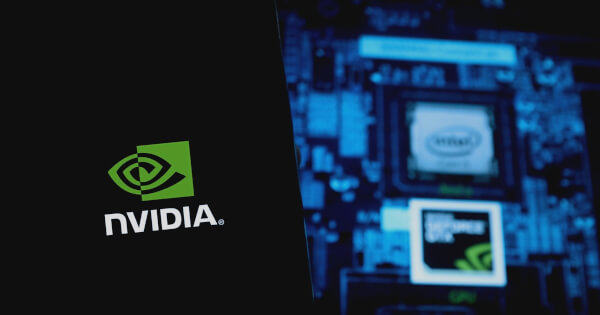NVIDIA CEO Jensen Huang Envisions AI-Powered Future for Electric Grids
Rebeca Moen Jun 19, 2024 08:11
NVIDIA CEO Jensen Huang discusses the transformative potential of AI in revolutionizing the electric grid at the Edison Electric Institute's annual meeting.

The electric grid and the utilities managing it could play a pivotal role in the forthcoming industrial revolution driven by artificial intelligence (AI) and accelerated computing, according to Jensen Huang, founder and CEO of NVIDIA. Speaking at the annual meeting of the Edison Electric Institute (EEI), Huang emphasized the transformative potential of AI for utilities and their customers.
In a fireside chat with Pedro Pizarro, chair of EEI and CEO of Edison International, Huang highlighted how AI can significantly enhance the productivity of utility employees and revolutionize energy delivery. He explained that AI-powered smart meters could enable customers to sell excess electricity to their neighbors, effectively creating a smart network similar to an app store for energy.
“The future of digital intelligence is quite bright, and so the future of the energy sector is bright, too,” Huang remarked to an audience of over a thousand utility and energy industry executives. He believes that AI, much like previous industrial revolutions, will drive productivity to unprecedented levels.
AI Lights Up Electric Grids
Currently, electric grids operate primarily as one-way systems that connect large power plants to numerous users. However, Huang envisions a future where grids become two-way, flexible, and distributed networks. This new model will integrate solar and wind farms, homes with solar panels, batteries, and electric vehicle chargers, all managed by autonomous control systems capable of real-time data processing and analysis—tasks ideally suited for AI and accelerated computing.
Various companies are already leveraging NVIDIA’s technologies to implement AI across electric grids. For instance, utility vendor Hubbell and startup Utilidata, part of the NVIDIA Inception program, have developed a new generation of smart meters using the NVIDIA Jetson platform. These meters can process and analyze real-time grid data using AI models at the edge. Deloitte has also announced its support for this initiative.
Siemens Energy is working with AI and NVIDIA Omniverse to create digital twins of transformers in substations, enhancing predictive maintenance and boosting grid resilience. Additionally, Siemens Gamesa has utilized Omniverse and accelerated computing to optimize turbine placements for wind farms, as reported in a video on the subject.
“Deploying AI and advanced computing technologies developed by NVIDIA enables faster and better grid modernization, and we, in turn, can deliver for our customers,” said Maria Pope, CEO of Portland General Electric in Oregon.
NVIDIA Delivers 45,000x Gain in Energy Efficiency
Huang also noted that NVIDIA has significantly reduced the costs and energy required to deploy AI. Over the past eight years, the company has increased the energy efficiency of running AI inference on state-of-the-art large language models by an impressive 45,000 times. NVIDIA’s Blackwell architecture GPUs are expected to provide 20 times greater energy efficiency than CPUs for AI and high-performance computing. If all CPU servers for these tasks transitioned to GPUs, users could save 37 terawatt-hours annually, equivalent to the electricity use of five million homes.
As a result, NVIDIA-powered systems have dominated the latest Green500 ranking of the world’s most energy-efficient supercomputers, capturing the top six spots and seven of the top ten.
A recent report also calls for governments to accelerate the adoption of AI to drive energy efficiency across various industries. The report cites examples of utilities using AI to enhance the efficiency of the electric grid.
For more information, visit the NVIDIA Blog.
Image source: Shutterstock.jpg)
